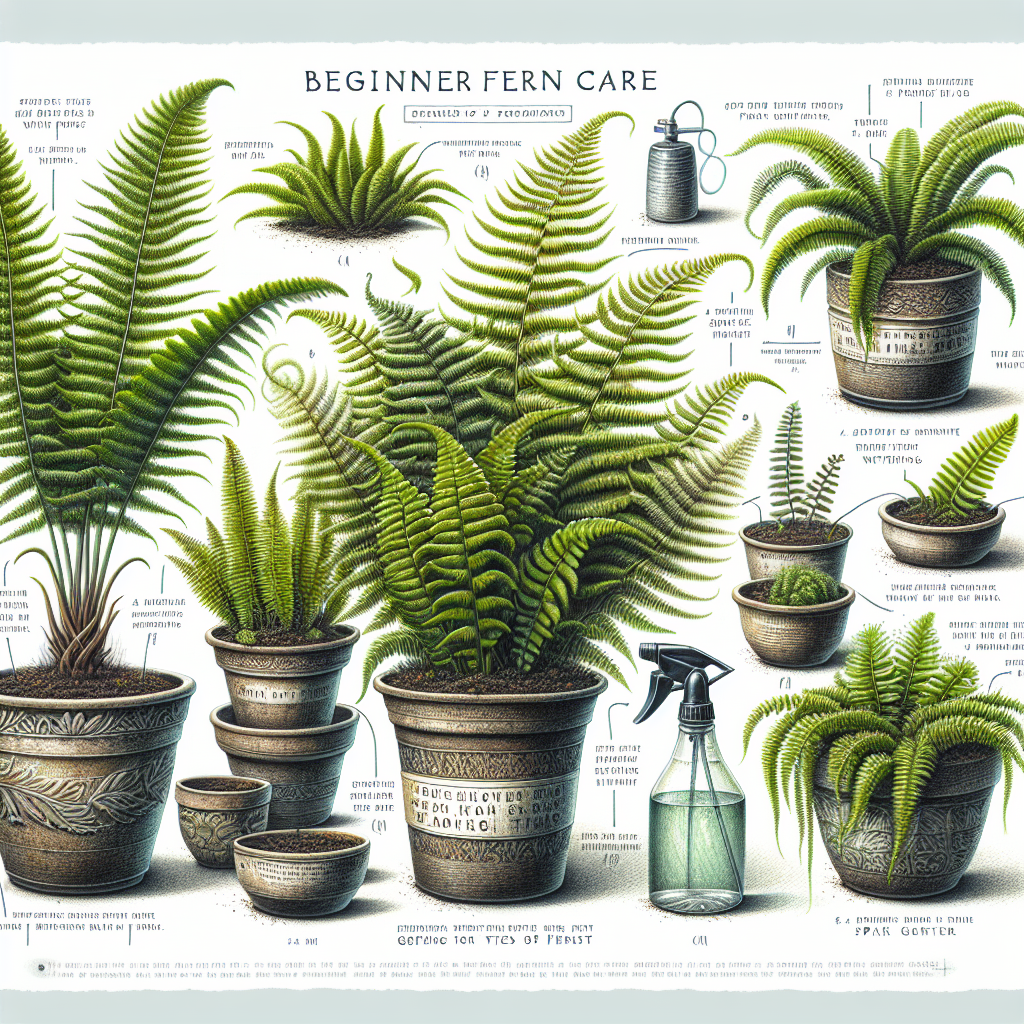Ferns are some of the oldest plants on Earth, dating back to over 300 million years ago. They come in a wide variety of shapes and sizes, making them a popular choice for indoor and outdoor gardens. One great way to showcase these beautiful plants is by growing them in containers. This beginner’s guide will provide you with all the information you need to successfully grow thriving ferns in containers.
Choosing the Right Container
When it comes to choosing a container for your ferns, there are a few key factors to consider. First and foremost, you’ll want to make sure that the pot has good drainage holes at the bottom. Ferns don’t like sitting in waterlogged soil, as it can cause their roots to rot. Additionally, you’ll want to choose a pot that is large enough to accommodate the size of your ferns. Most ferns have shallow root systems, so a wide and shallow pot is usually best.
Choosing the Right Soil
Ferns prefer soil that is rich in organic matter and well-draining. You can use a pre-made potting mix specifically formulated for ferns, or you can make your own by mixing equal parts peat moss, perlite, and compost. Avoid using regular garden soil, as it tends to be too heavy and compact for ferns.
Planting Your Ferns
When planting your ferns, be sure to handle them with care as their fronds are delicate and easily damaged. Gently separate the roots of the plant before placing it in the pot and backfill with soil until the roots are covered. Water thoroughly after planting to help settle the soil around the roots.
Light Requirements
Ferns thrive in bright, indirect light. Place your container in a location that receives filtered sunlight throughout the day, such as near a window with sheer curtains or under a tree canopy outdoors. Avoid placing your ferns in direct sunlight, as this can scorch their fronds.
Watering
Proper watering is key to keeping your ferns healthy and thriving. Water only when the top inch of soil feels dry to the touch, being careful not to overwater as this can lead to root rot. Keep in mind that humidity levels can also affect how often you need to water your ferns – if you notice that their fronds are starting to dry out or curl up, consider misting them regularly or placing a tray of water nearby.
Feeding Your Ferns
To keep your ferns looking their best, it’s important to feed them regularly during their growing season (usually spring through summer). You can use a balanced liquid fertilizer diluted at half-strength every 4-6 weeks. Be sure not to over-fertilize as this can cause nutrient burn and damage your plants.
Pruning and Maintenance
Regular pruning is essential for keeping your ferns looking neat and healthy. Remove any dead or yellowing fronds by cutting them off at the base using sharp scissors or pruning shears. You may also need to repot your fern every couple of years as they outgrow their containers.
Common Issues and Troubleshooting
Despite your best efforts, you may encounter some common issues while growing ferns in containers. Yellowing fronds could be a sign of overwatering or nutrient deficiency, while brown tips on fronds could indicate underwatering or low humidity levels. Pest infestations such as spider mites or mealybugs can also affect your plants – treat these with neem oil or insecticidal soap.
In conclusion, growing thriving ferns in containers is an enjoyable and rewarding experience for beginners looking to add some greenery into their homes or gardens. By following these tips and guidelines on choosing the right container, soil mixture, light requirements, watering schedule, feeding regimen,
pruning techniques – you’ll be well on your way to creating a lush oasis filled with beautiful fern specimens! Happy gardening!














